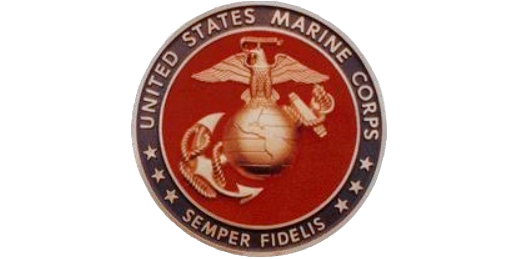Major Patrick “Coach” Lieneweg is the Marine Corps faculty advisor at the US Army University of Foreign Military and Cultural Studies in Ft. Leavenworth, Kansas, where he facilitates Red Team seminars and Strategic Broadening courses for mid-level military and interagency planners. Major Lieneweg has served over 20 years as a helicopter pilot instructor, and aviation operations planner. He holds a Master of Military Studies from the Marine Corps University, and is a student of Public Administration at Syracuse University.
1. You teach a seminar on “Red Teaming” for the Army. Could you explain what “Red Teaming” means?
Red Teams provide military decision makers and staffs with an independent capability to fully explore alternatives in plans, operations, and capabilities in the context of the operational environment and from the perspective of coalition partners, neutral populations, and adversaries.
In order to reduce decision error under conditions of uncertainty and ambiguity, Red Teams help staffs frame difficult problems and develop key questions to deepen understanding. They also provide critical reviews from an outsider’s perspective, close intra-team communication gaps, and help build awareness of potential decision traps posed by flawed assumptions, cognitive biases, and logical fallacies.
The idea of Red Teaming is to create an environment of collaborative dissent: to improve the quality of thinking by challenging prevailing notions, testing assumptions, and asking critical questions. To achieve this, our organization trains Red Team members in groupthink mitigation, decision facilitation, structured analytical techniques, operational design, and other applied critical thinking methods.
2. What benefits does “Red Teaming” offer?
Particularly in the military context, the world is becoming an increasingly complex place, with increasingly ambiguous and ill-defined problems. Coupled, non-linear socio-economic systems hide the potential for unintended, drastic consequences, and sometimes our most well-intentioned decisions produce the exact opposite effects we desire.
If we consider in this context our human tendencies toward overconfidence, bounded rationality, ethnocentrism, social hierarchy, groupthink, and the entrained linearity of Western thought, the need for people who think differently becomes increasingly evident.
Red Teams combine critical, creative, systems, and empathic thinking to develop ways of seeing ill-structured problems from different stakeholder perspectives, in order to help planners develop better strategic alternatives, and so improve the quality of decisions.
The most effective Red Teams work behind the scenes, providing quiet, thoughtful recommendations upon invitation. Their processes and methods are carefully designed to combine and sequence in unique ways to fit the requirements of the problem or the team. Sometimes they are assigned a formal role in the decision process, but often it can be difficult to pinpoint the exact “thing” or “product” they provide.
3. What prompted you to start teaching “Red Teaming”?
A specific set of orders from the Marine Corps manpower management team! I had only heard of Red Teaming once, as a young officer at the Marine Corps Command & Staff College in Quantico. At the time, I didn’t understand it, and pursued other priorities until I was selected as an exchange instructor to the US Army University of Foreign Military and Cultural Studies in Ft. Leavenworth.
The experience has been worldview-altering. I already have a natural disposition to weigh options carefully and view things through a skeptical lens, but this system of thinking differently was unlike anything I’d encountered before. The creative tension of Red Teaming enhances the adaptive, mission-oriented mindset the Marines already espouse, and I soon became an ardent enthusiast.
4. The military is perceived to be one of the most hierarchical institutions around. How do you cultivate an environment that maintains the chain of command while also mitigating groupthink and encouraging critical thinking?
This is a critical question for a Red Team, and is ultimately a question of leadership and trust.
Fortunately, the critical need to challenge conventional thinking is well-recognized among many of our senior leaders. This lesson has been learned the hard way time and again in our campaigns, and continues to challenge planners and strategists. Buy-in from these senior leaders provides necessary endorsements and authorities at the policy level.
Yet, even with top-cover, Red Teams may be seen as threatening outsiders, whose apparent purpose is to expose people’s flaws and weaknesses. Moreover, if a Red Team has direct and trusted access to the decision maker, the threat to reputations and careers might be even worse. This may well lead to resistance and sabotage, undermining the Red Team’s credibility and eventually sidelining them.
With this in mind, Red Teams seek to develop a deep sense of self-awareness, not only to gain understanding of their own biases, but to enhance the way they interact with others. They assess personality temperaments to understand group dynamics and improve interpersonal communications. They employ negotiation strategies to shape cooperative agreements. In our training curriculum, we’re starting to incorporate studies of social intelligence in high performing teams. The key is to build a relationship of trust and confidence, not only with the decision makers, but with the planning teams in the “dust of the arena”.
5. Which strategies do your students find most difficult to embrace?
The military values and develops strong leaders who can see and decide very quickly what needs to be done. We also tend to endorse a low tolerance for ambiguity; successful leaders bring order to chaos as rapidly as possible.
While contingency planning is a key part of military decision process, the contrarian thinking that goes into it is often limited by experience. Under conditions of uncertainty, we often bridge gaps in understanding by relying on organizational values and analogical thinking, and converging quickly on “good enough” solutions. Assumptions quickly become entrenched beliefs, and challenging them becomes very difficult.
Slowing down, suspending judgment, and conducting humble inquiry, or providing alternative analyses based on very tentative sets of hypotheses, is a difficult set of habits to develop in these cultural conditions.
Bold


